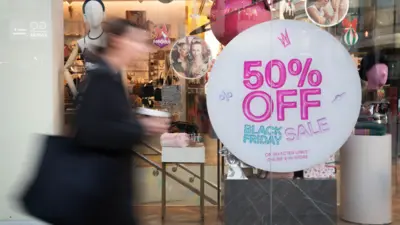We've updated our Privacy and Cookies Policy
We've made some important changes to our Privacy and Cookies Policy and we want you to know what this means for you and your data.
Ghana's red-hot funerals: Buried in a chilli pepper
Image source, Fellipe Abreu
Ghanaians take great pride in making coffins that reflect the life, dreams, passions and status of the dead.
Loved ones believe the dead should get the best possible send-off, with funerals being elaborate affairs.
Journalists Fellipe Abreu and Henrique Hedler visited two Kane Kwei Carpentry Workshops, in the capital Accra and the southern city of Kumasi, to meet the carpenters making custom-made coffins.
The shops are named after Seth Kane Kwei, who some say first designed fantasy coffins in Ghana.
Image source, Fellipe Abreu
With Ghana being one of the world's largest cocoa producers, families in rural areas collect and save their hard-earned money to bury the deceased in custom-made cocoa pods.
Top Stories
Coffins like this can cost up to $1,000 (ВЈ780) - a huge amount for the farmers, most of whom earn less than $3 a day.
Image source, Fellipe Abreu
Generally, the coffin designs reflect the occupation or status of the deceased. In this case "the chilli pepper carries a symbolic meaning that goes well beyond the life of a farmer", says workshop manager Eric Adjetey, who's been in the business for 50 years.
The red colour and spiciness represents the personality of that person. "He was hot and temperamental, a person you don't want to mess around with."
Image source, Fellipe Abreu
Coffins in the style of a Mercedes Benz are popular - this one is for a wealthy man who owned the German-made car, and his grave will be dug to fit it.
"This is one of the most commonly used coffins. It represents the person's high social status," says coffin maker Steve Ansah.
Top Stories
You may also like:
Most people call the pieces of art fantasy coffins, but they are locally called Abeduu Adekai, which means "proverb boxes".
This is because there is a symbolic meaning behind each design.
Image source, Fellipe Abreu
Aeroplanes are also among the popular designs. This one is for a child. It symbolizes his successful journey to the afterlife.
Sometimes community members chip in to help with the costs of making a coffin.
Image source, Fellipe Abreu
In recent years, the real estate sector has boomed in Ghana. This coffin is for a landlord who was widely appreciated by his community for building and renting homes to them.
"Generally, it's the responsibility of loved ones and family members to buy the coffin for the deceased. But they also have to pay for the ceremony, including buying food and drink, and clothing for the deceased."
"The ceremony happens from Thursday to Monday. On Thursday the family gets the coffin; on Friday the body is brought from the mortuary; on Saturday the funeral takes places, while on Sunday people go to church. On Monday family members count the money that was invested and donated," Mr Adjetey says.
Top Stories
Image source, Fellipe Abreu
Carpenters carve the coffin, then sand it to create a uniform surface ready to be painted. A local singer will be buried in this microphone-shaped coffin.
"We don't know the person's size so we ask the family, or even rely on photos," says Mr Ansah, the carpenter.
Image source, Fellipe Abreu
In recent years, other carpenters have started making custom-made coffins to meet the booming local demand.
Image source, Fellipe Abreu
The palanquin and queen is actually not a coffin, it was custom-made for an art gallery in Philadelphia in the US.
Customers in more than 20 countries have bought these coffins over the last decades.
The coffin designs have also attracted interest from woodworking students in South Korea, Russia, US and Denmark, who have come to Ghana to learn the trade.
Local carpenters often use simple handmade tools to sand the wood and carve the wood into a coffin shape.
Image source, Fellipe Abreu
Text and photos by Fellipe Abreu and Henrique Hedler
Top Stories
More to explore
Most read
Content is not available








